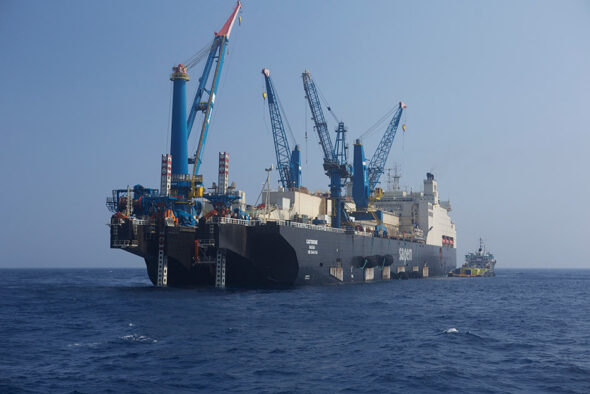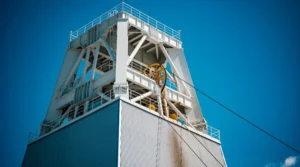What goes on in Poland on the 9th of July.
The construction of the Baltic Pipe in the Baltic Sea is going like a bomb. 20 percent in 12 days
During 12 days of work, Castorone laid over 53 km of Baltic Pipe in the Baltic Sea. The total length of the maritime section in the Baltic Sea is 275 km. Over 20 percent of the pipe has been done and dusted. About 225 km of pipes remain to be laid. From the beginning, Castorone has been laying pipes with a daily speed of over 4.4 km, while the investor assumed an average daily speed of 3.5 km. Saipem’s largest unit started work at Construction Point 150 (PK150) (150 km pipeline off the coast of Denmark) near Bornholm and is heading across the Swedish EEZ towards Zealand.
In the next dozen or so hours, the second Saipem PLV – Castoro Sei – will arrive at the construction site. The ship will lay pipes from PK 150 towards the Polish coast. Due to the different specifics of the operation (an anchored unit as opposed to a dynamically positioned Castorone), it will not be as effective in daily laying than Castorone. The use of an anchored vessel for construction in the area south of the Bornholm Island was, however, a requirement of the DEA made in the permit decision. Soon, the third vessel from Saipemu’s fleet, the Castoro 10 barge, should set off for the Baltic Sea. It will lay pipes in the shallowest parts of the shelves of Poland and Denmark. All works should be completed by October.
PGE is counting on a support system for energy storage
„We assume that the support system for energy storage should be in the form of an auction, a separate support system. Currently, however, there are no regulations in this regard, both at the national and EU level,” Wojciech Dąbrowski, the president of Polska Grupa Energetyczna, told journalists. Dąbrowski pointed out that there must be a special tariff for energy storage. „If there is to be a large-scale development of energy storage, there must be a special tariff dedicated to energy storage. It will be classified as a kind of energy generation system, so it needs a support system such as RES or cogeneration,” he explained. Work on the support system is currently underway at the Ministry of Climate and Environment. „According to PGE’s strategy, the company wants to have 800 MW energy storage facilities by 2030. The largest warehouse is to be built in Żarnowiec. Its power is to exceed 200 MW. The project has already passed the first stage of qualifications in the European Union and may receive funding as one of the six priority solutions,” Dąbrowski said.









